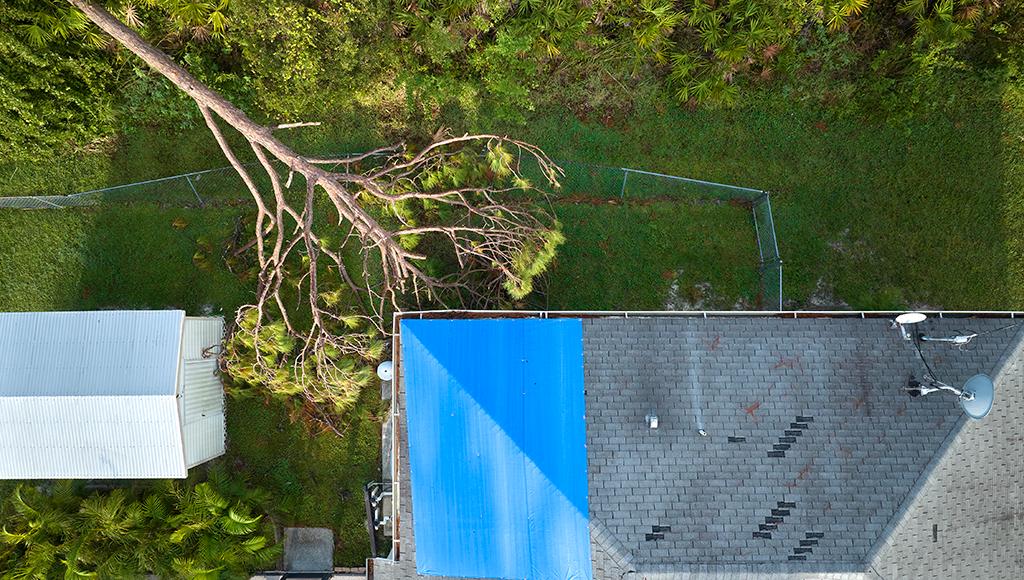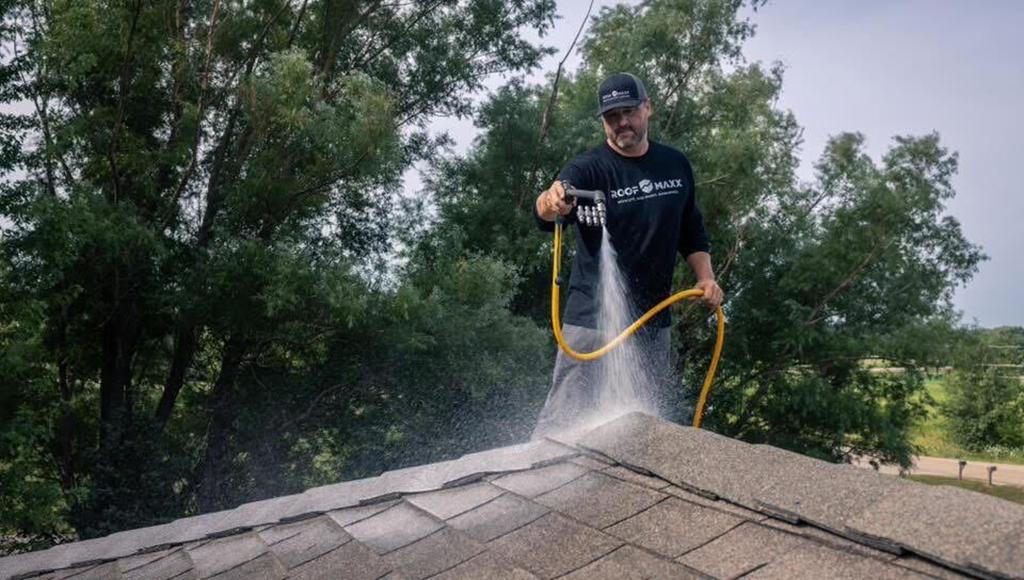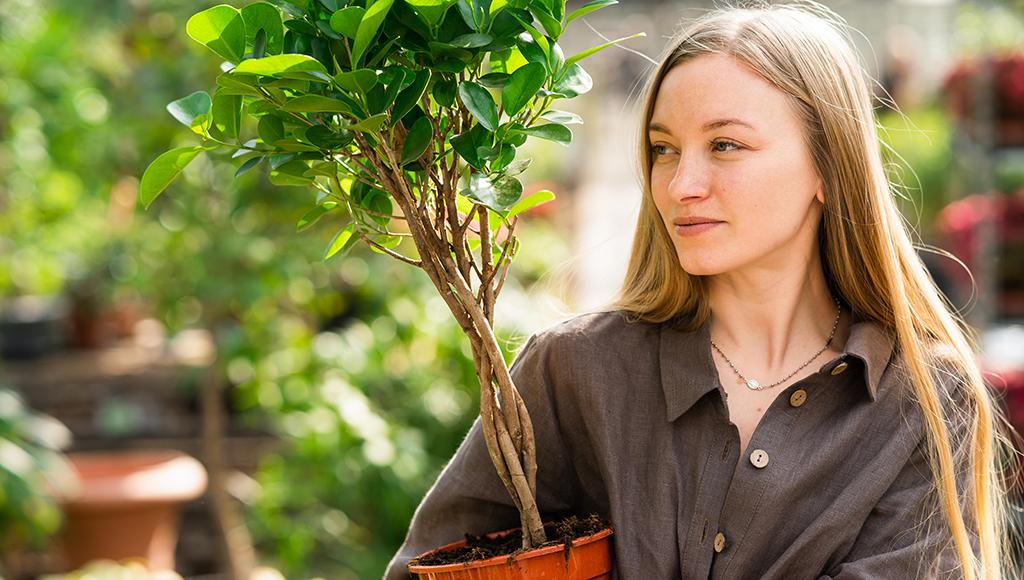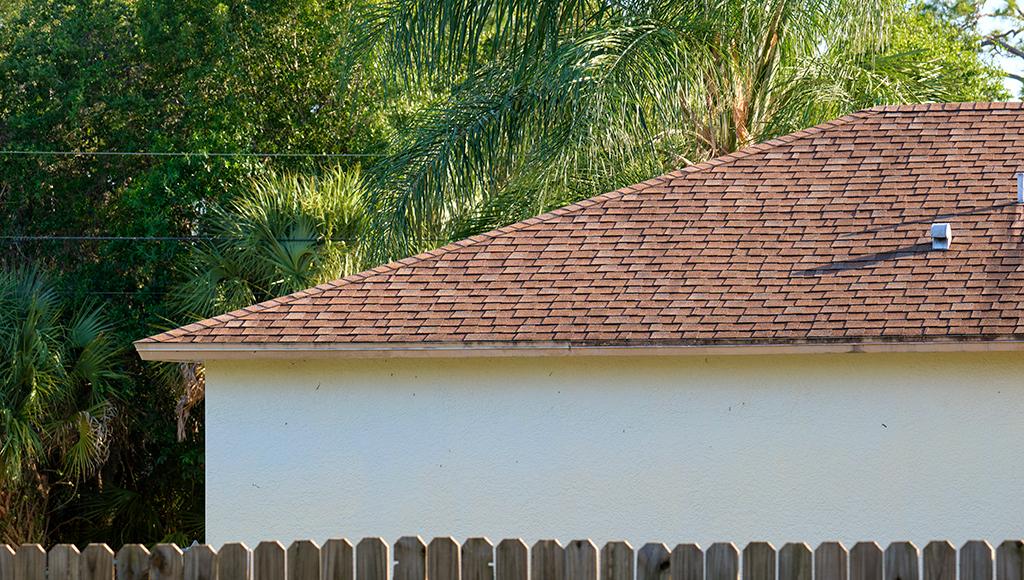Trees add curb appeal, attract wildlife, and provide shade on the hottest days of the year, but they can also be dangerous when they’re too close to your home. They can scratch away at the surface of your shingles, drop leaves and branches, or even come crashing down onto your home during a storm if they’re not planted far enough away.
Arborists will tell you that a well-cared-for healthy tree is much less likely to come down—and that’s true, but the risk is never zero. Lower your chances even further by following the tips in this guide, from planting the right species to applying Roof Maxx, which helps keep your shingles durable and contains a natural fungicide. See how it works in this 1-minute video.

Falling trees are one of the most dramatic risks, but tree-related roof damage rarely happens in a single event like that.
Instead, it builds up over time:
All of these issues directly contribute to chronic moisture retention. Over time, that’s a recipe for mold, wood rot, and structural damage.
Many trees are also a direct vector for fungi, algae, moss, and insect invasion. The risk for transmission is higher if they make direct contact with your roof somewhere, but spores and flying insects can float over on the breeze from dozens of feet away.

Roof Maxx can actually help protect your aging asphalt shingle roof from the unwanted growths that sometimes creep over from nearby trees! Our soy-based roof rejuvenation treatment contains a natural fungicide that helps stop mold, moss, and mildew from infiltrating your shingles.
To be clear, Roof Maxx won’t remove existing mold or algae—but it will help inhibit it from forming in the first place. Learn more about how the treatment works here.
Roof Maxx can also help protect your roof by keeping your shingles flexible and durable. Here’s how:

The best way to lower your risk for roof damage is to plant all trees at least 15 to 20 feet away from your home. This gives the roots and canopy plenty of room to grow and mature over time without damaging your roof or sewer lines.
Picking a species that thrives in your climate and cultivating it responsibly will also help because a healthy tree is a stronger tree. Good growing conditions make it easier for the tree to fight off the kind of disease, rot, and weakness that leads to dropped limbs and sudden failures.
To find an ideal species, start by identifying your growing zone on the USDA’s Plant Hardiness Map. Look for zone-specific trees with a long lifespan, deep roots, and strong wood, but remember that even the most suitable trees will still cause problems if they’re planted too close.
Beyond basic climate zones, you also need to factor in extreme cold snaps, heat waves, high winds, heavy rain, and natural vulnerabilities that make roof damage more likely. Some species aren’t built to handle environmental stressors like these or are well-known for damaging roofs, even if they’re native.
For example:
There will be cases where crossover happens. For example, Southern Magnolia thrives in warmer climates below zone 7 and is very popular with homeowners, but it will still drop leaves and blossoms onto your roof and clog up your gutters if it’s planted too close.
Yes… and no. They hold onto their needles, which are really just very small leaves, all year long—that means less seasonal fall-out to clog up your gutters and draw moisture to your shingles. So, compared to deciduous trees that shed heavily every fall, evergreens can help reduce debris and moisture retention.
But evergreens can still shed needles, cones, and small branches if they aren’t suitable for your climate or cared for properly. More importantly, most grow large enough to pose a serious threat if they’re planted very close to your home. Plant them at least 20+ feet away.

Taking care of the trees around your home is one of the easiest ways to prevent roof damage. Healthy, well-maintained trees are far less likely to drop heavy limbs, clog your gutters, or collapse during storms.
When in doubt, call a certified arborist—they’re an incredible source of guidance. A good arborist can give you advice, recommend treatments, help you trim back trees, or just help you decide when it’s time to give your tree an honorable but fitting end for safety reasons.

Roof care and tree maintenance have this much in common: an ounce of prevention is typically worth far more than a pound of cure. By taking care of your roof, following planting guidelines, and keeping trees healthy, you lower the risk for everything to come crashing down—both literally and financially.
Being proactive like this is the best way to save money. But if your asphalt shingle roof is starting to show signs of age, it’s time to step up your strategy!
Roof Maxx helps rejuvenate asphalt shingles, shoring up the integrity of your entire roofing system and extending the life of your roof by up to 5 years or more. Connect with your closest dealer now to get a free, no-obligation quote.
With our five-year, transferable warranty, you’ll enjoy the peace of mind that your roof and entire home are protected.